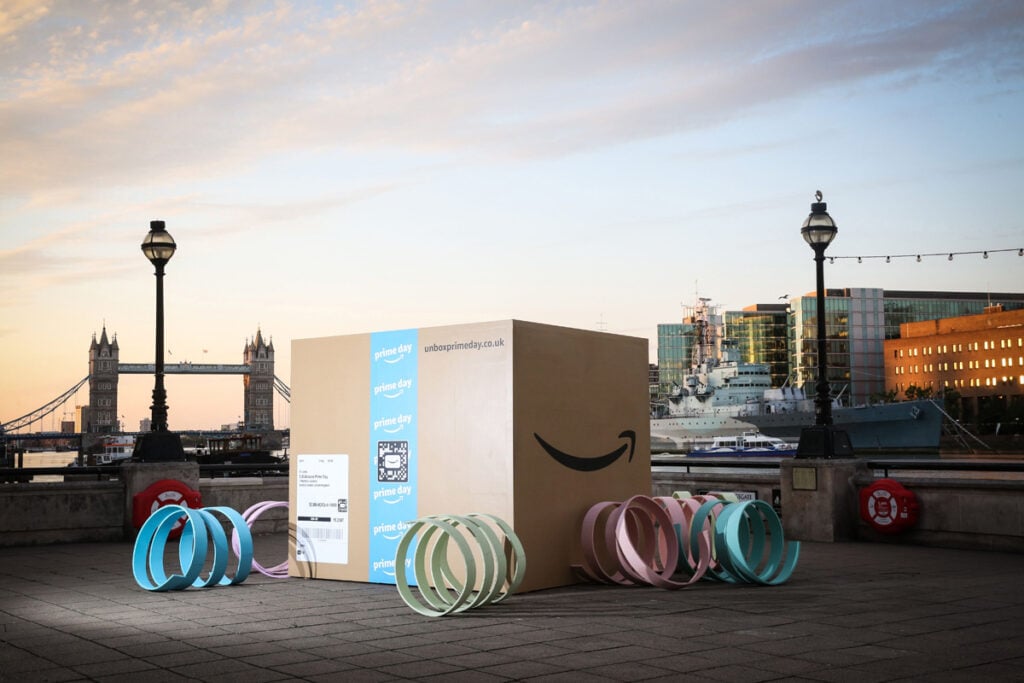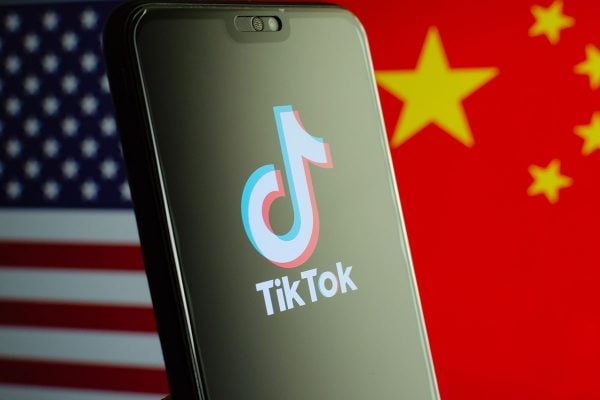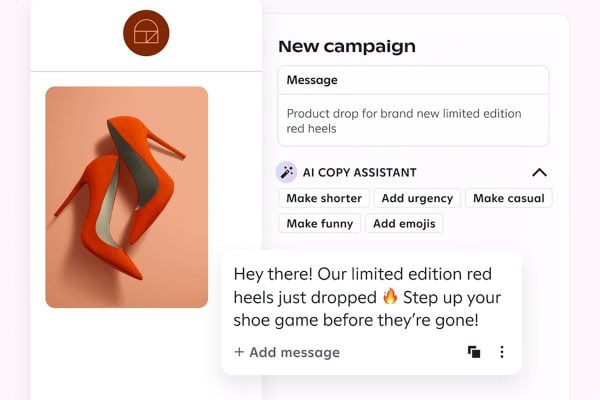As Prime Day gets underway, attention turns to the influence the marketplace has over shoppers – and other retailers – with new research showing that more than half (51%) of consumers start their online shopping journey on Amazon.
Data from a new Future Shopper study released today by Salmon, a Wunderman Commerce company, shows Amazon not only leads as consumers’ preferred starting point for shopping (51%), but also dominates where consumers complete the majority of their online purchases (55%).
More than 3,500 consumers who shop online across the US and UK were surveyed for this report.
This year’s research shows Amazon capturing a significant share of online spending – 35% in the UK and 52% in the US. While 72% of consumers are more likely to shop with retailers that are digitally innovative – up from 60% in 2017, many retailers are still failing to meet these expectations. 72% of consumers state that retailers should be more innovative in their use of digital technology to improve their overall shopping experience.
Additionally, consumers named ‘price’ (64%) and ‘free delivery’ (54%) as key criteria influencing purchasing decisions.
“While Amazon’s dominance of the online retail market is no secret, few could have predicted how it has become not only the starting point in the online shopping journey, but also the predominant channel for product purchase. It’s clear that Amazon has set the standard for consumer expectations with its focus on price, delivery and innovation.”
– Hugh Fletcher, Global Head of Innovation and Consultancy, Salmon
But is Prime Day being under utilised by Amazon, as well as all other retailers? While Prime Day certainly drives sales, its reliance on pushing shoppers to specific products shows that Amazon isn’t driving the kind of long term engagement that all retailers need to thrive.
“While Prime Day will act as a boost to Amazon’s revenue streams, it seems even large retailers are still falling at the first hurdle when it comes to maximising the impact of these ecommerce events. By pointing consumers to specific product detail pages (PDPs) – whether it’s the latest smart watches or connected home technologies – Amazon is only encouraging consumers to make a one-off purchase, therefore missing an opportunity to drive further engagement and in turn, the potential of multiple sales.”
– Brian O’Neill, Chief Technology Officer at Monetate
Recent data from the Monetate Ecommerce Quarterly found that directing shoppers to PDPs means they’re then only half as likely to make a purchase, compared to shoppers who enter the site elsewhere. Bounce rates were also a lot higher, with consumers viewing significantly less pages meaning once they have got the one or two items they came for, they drop off.
Amazon has always been a leader in personalisation but focusing on such specific product offerings means they’re missing an opportunity to better engage with the customers they have fought so hard to win.”
That said, Amazon still has several massive advantages. For starters, Alexa is going to be big this year on Prime Day, suggests Salmon. Voice Assistants like Amazon Echo and Google Home continue to grow with 40% of consumers currently using or having used this capability. Brands must be prepared to capitalize on this new shopping channel as 55% of consumers are open to purchasing through voice-activated devices. However, 89% said they’d like to see the product on a screen before a voice assistant orders it.
Interestingly, the report also finds that shoppers who don’t start their journey on Amazon or Google are more likely to shop on: eBay (11%), a retailer’s website (7%), the brand’s own website (6%) or social media sites (3%).
Amazon’s delivery services – Prime and Prime Now – have also had an impact on delivery expectations, with 22% of consumers now expecting same-day delivery and 43% expecting delivery within 24 hours.
Amazon’s impact on search shopping at a glance
Amazon’s retail dominance, particularly over Google
- 35% of all UK online spend goes through Amazon, 52% in the US
- 51% of shoppers start their journey on Amazon (compared to 16% on Google) and 55% purchase their goods on Amazon, showing where you start is usually where you finish your shop
- Price (64%) and free delivery (54%) is considered more important than brand (39%) for consumer
Consumers want retailers that are more digitally innovative and they are prepared to use tech such as automated shopping
- 72% of consumers are more likely to shop with retailers that are digitally innovative – up from 60% in 2017
- 57% of shoppers are now prepared to use Programmatic Commerce™ (automated shopping technology using IoT-connected devices) compared to 46% in 2017 and only 10% in 2016.







